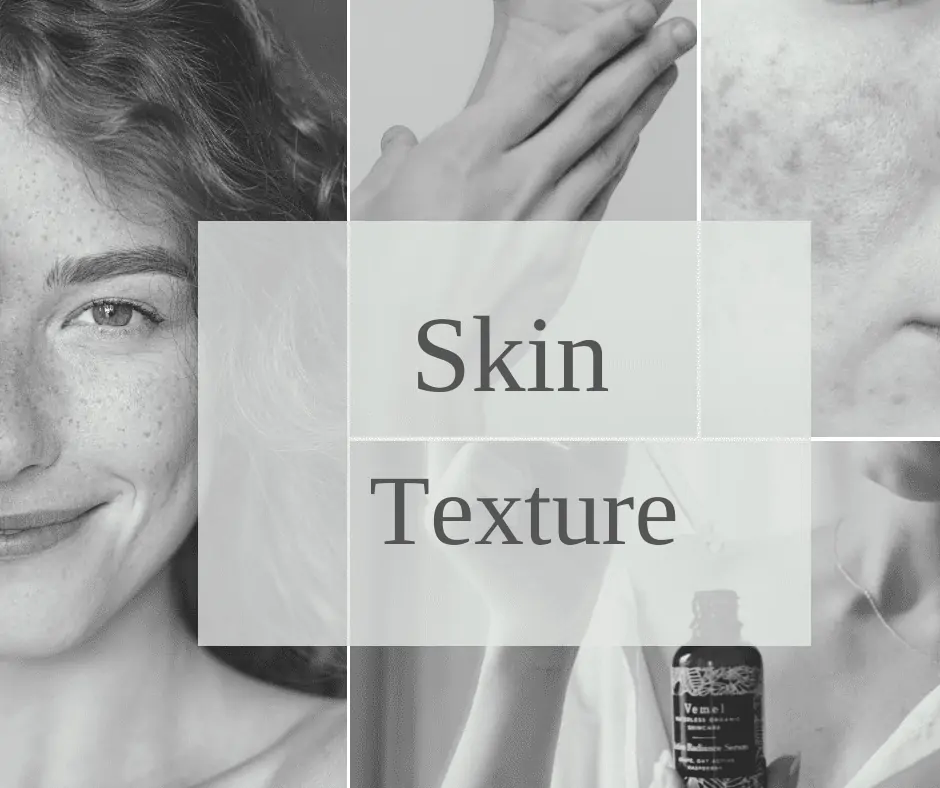
Whilst we might have gotten to grips with our skin type, and even understood how to tackle our uneven skin tone – skin texture is a term we don’t hear about quite as often. And yet, it is just as common as skin conditions like hyperpigmentation and acne, which many products we see on the shelves are often targeting. So, what actually is skin texture?
The clue really is in the name, the term ‘skin texture’ refers to the overall feel or condition of the surface of the skin. Meaning not only does it affect the appearance of the skin, but also how it feels to the touch. Those with healthy skin texture will find it is smooth, soft and supple – but those with textured skin will notice it can feel rough, patchy and may notice bumps and flakes. Skin texture is often a sign of an underlying skin concern, but the good news is with a few simple adjustments in your day to day routine, you could see a world of difference!
What Causes Skin Texture?
- Perhaps one of the most common causes of skin texture, and one people might not realise – is sensitivity to a specific ingredient. Of course, being sensitive to an ingredient does not mean you’re completely allergic to it, but that your body doesn’t particularly care for it in its system, and so can show mild reactive symptoms like inflammation/congestion on the skin. It can also vary from being a food based item like gluten or soy, to being a topical product like an ingredient within your skincare or makeup products, like parabens and alcohols.
- Another cause of skin texture can actually be other skin conditions. From eczema to psoriasis, and acne being a most skin conditions can end up affecting the texture of the skin. This is because the inflammation caused by the condition leads to surface level symptoms, potentially causing flakiness, rashes and dryness – all of which will leave a not so smooth feel to the touch.
- Alongside ingredient sensitivity, excess dead skin cells building up on the surface of the skin is one of the most common causes of skin texture. The result of this is bumpy, uneven skin which often looks dull and tired in appearance too.
- And although there are many other contributing factors, sun exposure without proper protection is one of the most damaging causes of uneven skin texture as well as pore size irregularity. Sun damage can of course come in the form of sun burn, but also in more subtle ways like a coarse texture to the skin, or surface level dryness.
So, what can we do from here?
Know some of the factors contributing to the texture on our skin means we’re able to better arm ourselves against texture in the future, whilst also healing and improving our current condition. All it takes is a few little changes.
Exfoliate – but don’t over exfoliate!
As a build up of dead skin cells on the skin can be a major factor in causing textured skin, the obvious answer would be to exfoliate. But exfoliation can be a tricky one to get right. Doing too much can lead to a damaged skin barrier, which circles right back to more textured, irritated and inflamed skin – but equally doing too little means the build up of bacteria can lead to breakouts and clogged pores. But finding that sweet spot doesn’t have to be hard if you’re able to find a product that works with and not against your skin. Rather than opting for a harsh scrub filled with plastic that is likely to damage your skin barrier, opt for a gentle but effective face mask once or twice a week. The Vemel Super Fruit Powered Clay Mask is a great example. With rejuvenating Pink Clay, soothing Colloidal Oats and nourishing Mango Powder, your skin is left feeling refined and but not stripped of its own natural goodness. Use up to 3 times a week, and to really maximise its affect, Vemel founder Agi recommends adding a teaspoon of the Vemel Active Radiance Serum, a luxurious serum that works to repair, renew and protect the skin barrier, to unveil an overall healthier complexion
Never Skip The Sunscreen
Its not a coincidence that the way skin texture surfaces is very much in line with the way sun damage shows itself too. So sunscreen really is non-negotiable when it comes to wanting silky smooth skin. Often the impact sunscreen can have on the skin is underestimated, the damage it can prevent and also the healing it can create is not something to overlook. As always, we recommend at least SPF30 to get that full protection, and regular application (particularly when in direct sunlight) can really help the overall efficacy of the sunscreen.
Be Aware Of Sensitivities
As we mentioned earlier, textured skin can often be a direct result of the body not reacting well to a specific ingredient. This can either mean testing to find out about any intolerances or allergies, or going through a process of elimination. This can take some time, but once you notice improvement in the way your skin looks and feels, it is just the sign you need to understand your body is happier without that particular ingredient. Opting for skincare products that do not include harsh ingredients like alcohols, essential oils and fragrance is a great way to rid your skin of unnecessary stressors, which is why the Vemel range; organic, vegan, waterless and cruelty free, truly is made with every skin type in mind.
These small but significant changes can amount to a substantial improvement in the overall appearance of the skin, to work towards a healthier and happier you.